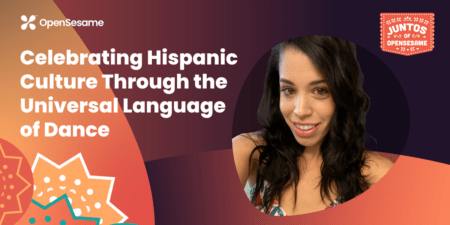September 15th through October 15th is Hispanic Heritage Month. Join us as we celebrate and share stories from our colleagues in the Juntos Employee Resource Group. Read Director of Digital Marketing and Operations, Katerina Maerefat’s, story about how hispanic dance connects her to her culture.
“Dancing with the feet is one thing, but dancing with the heart is another“
Unknown
Growing up surrounded by my Venezuelan family, music and dancing were an integral part of our gatherings for birthdays, holidays, etc. I remember my Tia (“Aunt”) Dulce teaching me how to dance for the first time when I was young. “Look at my feet, and follow them” is what she would say, which helped because I have always been more of a visual learner. But what it took me a while to understand, was the reason she taught me in this manner versus more of a typical “1-2-3” style. It was because, for her, the music had to be felt in your heart and then translated down to the movement of your body.
Fast forward to my high-school years, where I joined and participated in a Venezuelan folk dancing group called “Venezuela en Danzas”. This group was created to share the universal language of dance and Venezuelan folklore with the surrounding communities. Unlike most typical high schoolers who spent the start of their weekends hanging out with friends, I spent every Friday night strapping on my tacones (“high heel shoes”) and falda (“skirt”) and practicing Joropo and Tambor (i.e traditional dances of Venezuela). We performed at many venues across Texas including state fairs, church bazaars, retirement homes, etc. Spreading the language of dance to all those that would watch and listen.
I was not born in Venezuela, but I come from a family of immigrant parents who came to the states to pursue higher education. My mother was born in Caracas, Venezuela and it is through her and her family that she brought to this country for a better life that I learned about my hispanic culture. Specifically, the culture of dance. Often called the “core of culture” and a “universal language,” dance illustrates cultural identity and keeps traditions alive through the ages. It is both a source and exhibition of national pride and reflects and creates cultural tradition. Hispanic culture dance is for social purposes that brings friends and family together in an emotional connection to the music and traditions of their ancestors.
So on this Hispanic Heritage Month, I look back on my culture with pride and remember how I am keeping it alive by helping celebrate it through the universal language of dance.






